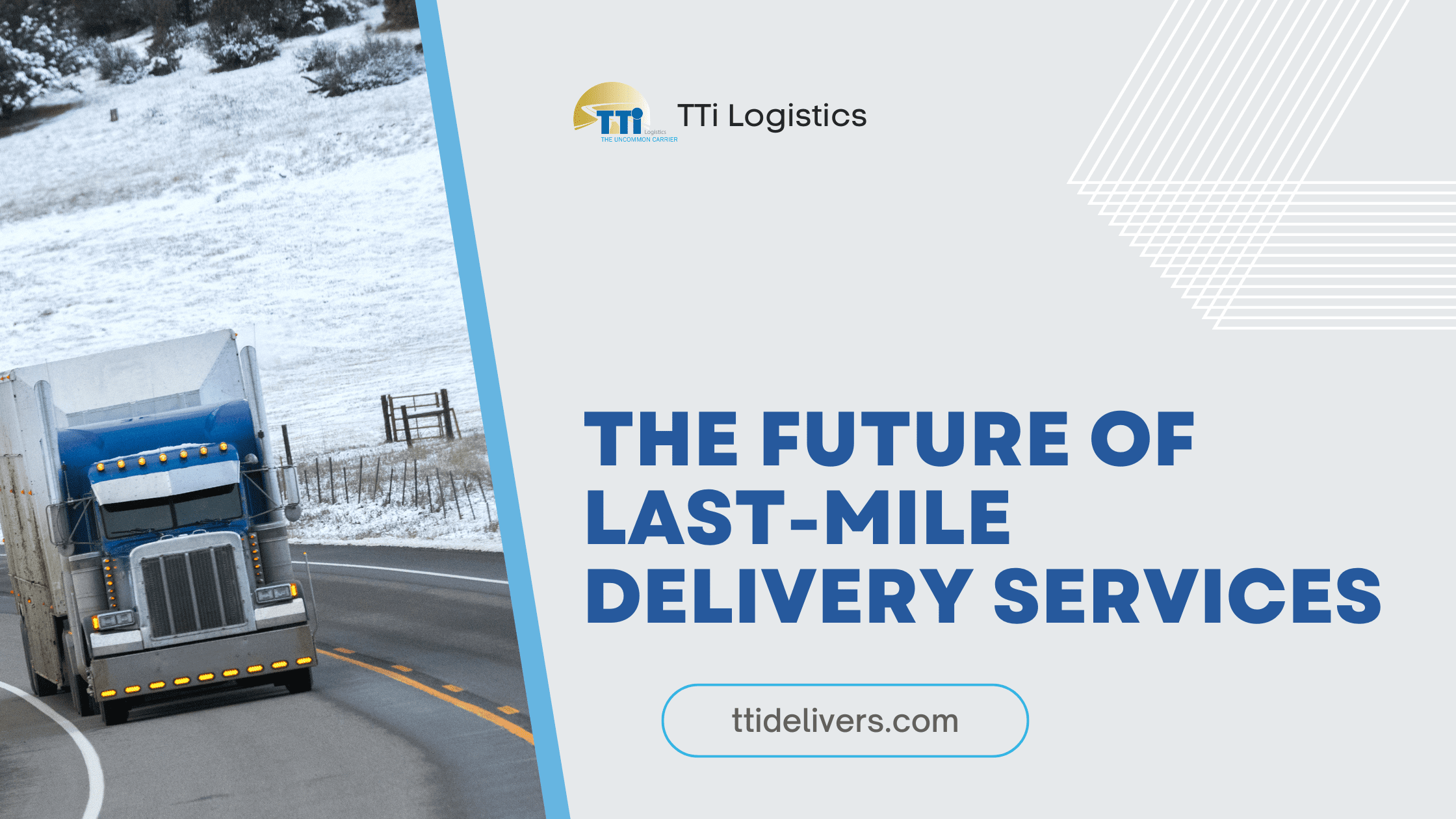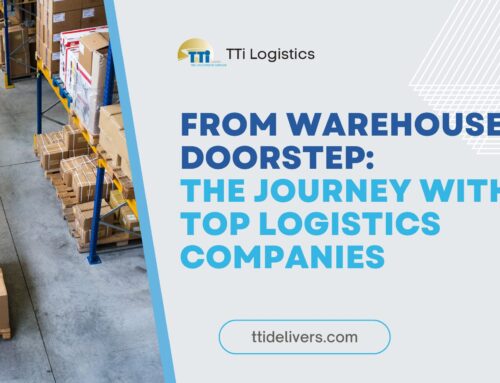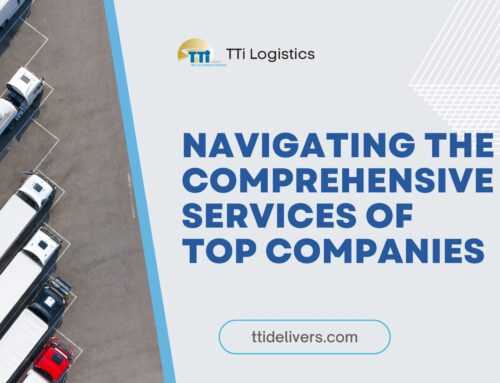Why Last-Mile Delivery Is More Critical Than Ever
In the rapidly evolving landscape of logistics, last-mile delivery stands out as a critical component that directly impacts customer satisfaction and overall operational efficiency. As e-commerce continues to grow, the demand for effective last-mile delivery services has never been higher. Companies are challenged to meet increasing customer expectations for faster, more reliable, and cost-effective delivery options.
The last mile represents the final step in the supply chain, where products are delivered from a distribution center or warehouse to the consumer’s doorstep. This segment is not only the most expensive part of the shipping process but also the most crucial for ensuring customer satisfaction. As we approach the holiday shopping season, businesses are focusing on enhancing their last-mile delivery strategies to capture the surge in online orders.
This blog post examines the future of last-mile delivery services, highlighting emerging trends, technological advancements, and how businesses are adapting to meet the demands of today’s consumers. By understanding these dynamics, companies can better position themselves to thrive in a competitive marketplace.
Understanding Last-Mile Delivery
Definition of Last-Mile Delivery
Last-mile delivery refers to the final step in the logistics process, where goods are transported from a distribution center or warehouse to the end consumer. This phase is often considered the most crucial and costly part of the shipping process, accounting for a significant portion of total delivery expenses. The efficiency of last-mile delivery directly affects customer satisfaction and retention, making it a key focus area for logistics providers.
Importance of Last-Mile Logistics in the Overall Supply Chain
Effective last-mile logistics is essential for ensuring that products reach customers in a timely and satisfactory manner. It involves not only the physical transportation of goods but also the management of various factors such as delivery speed, costs, and customer communication. As consumer expectations evolve, businesses must adapt their last-mile delivery strategies to meet these demands, resulting in a more streamlined supply chain overall.
Emerging Trends in Last-Mile Delivery
1. Increased Use of Technology
Technology is transforming the last-mile delivery landscape in several significant ways. Automation, artificial intelligence (AI), and machine learning are increasingly being integrated into logistics operations to improve efficiency and accuracy.
- Role of Automation, AI, and Machine Learning: Automated systems can optimize routing, predict delivery times, and manage inventory levels more effectively. AI-driven analytics can help businesses make data-informed decisions, ultimately leading to improved service delivery.
- Delivery Drones and Autonomous Vehicles: The adoption of drones for delivery is gaining traction, particularly in urban areas where traffic congestion can delay traditional delivery methods. Drones can navigate quickly and avoid road traffic, providing a faster alternative for last-mile delivery. Similarly, autonomous vehicles are being tested for delivery services, which could revolutionize the way goods are transported in the future.
2. Sustainability in Last-Mile Delivery
As environmental concerns become increasingly pressing, sustainability is a key focus for logistics providers. Companies are implementing eco-friendly practices to reduce their carbon footprints and enhance their brand reputation.
- Eco-Friendly Delivery Practices: This includes the use of electric vehicles (EVs), which produce zero emissions compared to traditional fuel-powered vehicles. Many companies are transitioning their fleets to EVs to reduce environmental impact and meet regulatory requirements.
- Sustainable Packaging Solutions: Businesses are also seeking sustainable packaging options, such as biodegradable materials and minimalistic designs that reduce waste. Implementing these practices not only helps the environment but can also attract environmentally conscious consumers.
3. Rise of On-Demand Delivery Services
The demand for on-demand delivery services is rapidly increasing as consumers expect faster and more convenient options. This trend is driven by the popularity of mobile apps and the gig economy.
- Consumer Demand for Faster Delivery Options: Customers now expect same-day or next-day delivery services, leading logistics companies to adapt their operations to meet these expectations. Companies are increasingly utilizing advanced routing software and predictive analytics to streamline operations and reduce delivery times.
- Impact of Mobile Apps and Gig Economy on Delivery Services: The rise of mobile applications has facilitated the growth of gig economy delivery services, where independent contractors handle deliveries. This model allows for more flexibility and faster response times, making it an attractive option for many businesses.
4. Enhanced Customer Experience
As competition in the logistics sector intensifies, enhancing the customer experience has become paramount. Companies are investing in technologies and processes that improve communication and tracking.
- Importance of Tracking and Communication: Real-time tracking allows customers to monitor their deliveries, increasing transparency and trust. Automated notifications regarding delivery status, estimated arrival times, and delays further enhance the customer experience.
- Customization of Delivery Options: Offering various delivery options, such as time slots or pickup locations, allows customers to choose what works best for them. This level of customization helps build customer loyalty and satisfaction.
Challenges in Last-Mile Delivery
Despite the advancements in last-mile delivery, several challenges remain that logistics providers must address.
1. Urban Congestion and Traffic Issues
As urban areas continue to grow, traffic congestion poses significant challenges for last-mile delivery. Delays caused by traffic can result in increased delivery times and costs, impacting overall efficiency.
- Solutions for Traffic Congestion: Logistics companies are exploring alternative delivery methods, such as using bicycles or electric scooters for short distances, to navigate congested areas more effectively. Additionally, planning deliveries during off-peak hours can help mitigate traffic-related delays.
2. Managing Costs While Meeting Customer Expectations
Balancing cost management with customer expectations is a significant challenge for logistics providers. As consumer demands for faster delivery options increase, companies must find ways to minimize costs without sacrificing service quality.
- Strategies for Cost Management: Investing in technology can lead to long-term cost savings by optimizing routes and improving inventory management. Additionally, forming partnerships with third-party logistics providers can enhance service offerings while sharing operational costs.
3. Addressing Delivery Failures and Logistics Complexities
Delivery failures, such as missed deliveries or damaged goods, can lead to customer dissatisfaction and increased costs for logistics companies. Managing these complexities requires effective communication and proactive problem-solving.
- Improving Delivery Success Rates: Implementing rigorous quality control measures and enhancing training for delivery personnel can help minimize errors. Additionally, establishing clear communication channels with customers can facilitate quick resolutions for any delivery issues that arise.
How Businesses Are Adapting
To navigate the evolving landscape of last-mile delivery, businesses are implementing various strategies and innovations.
1. Investing in Technology and Infrastructure
Companies are increasingly investing in technology and infrastructure to enhance their last-mile delivery capabilities. This includes upgrading software systems, adopting advanced routing tools, and expanding delivery networks.
- Importance of Infrastructure Investment: Building dedicated delivery hubs and fulfillment centers closer to urban areas can reduce transit times and improve service levels. These investments enable businesses to respond more quickly to customer demands and adapt to changing market conditions.
2. Partnering with Third-Party Logistics Providers
Collaborating with third-party logistics (3PL) providers can offer businesses flexibility and scalability in their delivery operations.
- Benefits of 3PL Partnerships: Outsourcing last-mile delivery to 3PL providers allows companies to leverage their expertise and resources, resulting in improved efficiency and service quality. This partnership model can be particularly beneficial during peak seasons, such as holidays, when demand surges.
3. Implementing Innovative Delivery Models
Logistics companies are exploring new delivery models to enhance efficiency and meet consumer expectations.
- Locker Systems and Crowdshipping: Locker systems allow customers to pick up their packages at designated locations, reducing the need for home deliveries. Crowdshipping, where individuals earn money by delivering packages on their routes, offers a flexible and scalable delivery option that can help companies meet increased demand.
Future Outlook for Last-Mile Delivery
The future of last-mile delivery is expected to be shaped by continued advancements in technology and evolving consumer expectations.
1. Predictions for the Evolution of Last-Mile Services
As technology continues to advance, we can expect to see further automation and integration of AI in last-mile delivery. This will lead to more efficient routing, predictive analytics for demand forecasting, and improved inventory management.
- Impact of Technology on Service Levels: With innovations such as drones and autonomous vehicles becoming more mainstream, the logistics industry may see a significant reduction in delivery times and costs, fundamentally changing how last-mile delivery is conducted.
2. The Potential Impact of Regulatory Changes and Technological Advancements
As governments around the world implement stricter regulations related to emissions and sustainability, logistics providers will need to adapt their operations accordingly.
- Adapting to Regulatory Changes: Companies that proactively embrace sustainability initiatives and invest in green technologies will not only comply with regulations but also appeal to environmentally conscious consumers.
Preparing for the Future of Last-Mile Delivery
Last-mile delivery is a dynamic and essential component of the logistics sector, significantly impacting customer satisfaction and operational efficiency. As businesses face increasing consumer demands for faster and more reliable delivery options, understanding the trends shaping the future of last-mile services is crucial. By investing in technology, adopting sustainable practices, and enhancing the customer experience, companies can position themselves to thrive in an evolving marketplace.
As the holiday shopping season approaches, businesses must take proactive steps to refine their last-mile delivery strategies and meet the expectations of today’s consumers. The future of last-mile delivery holds immense potential for those willing to innovate and adapt.







